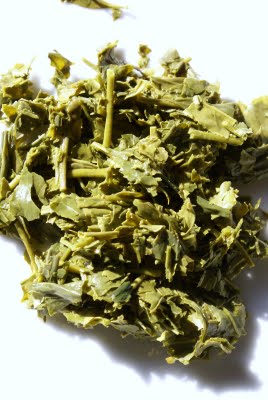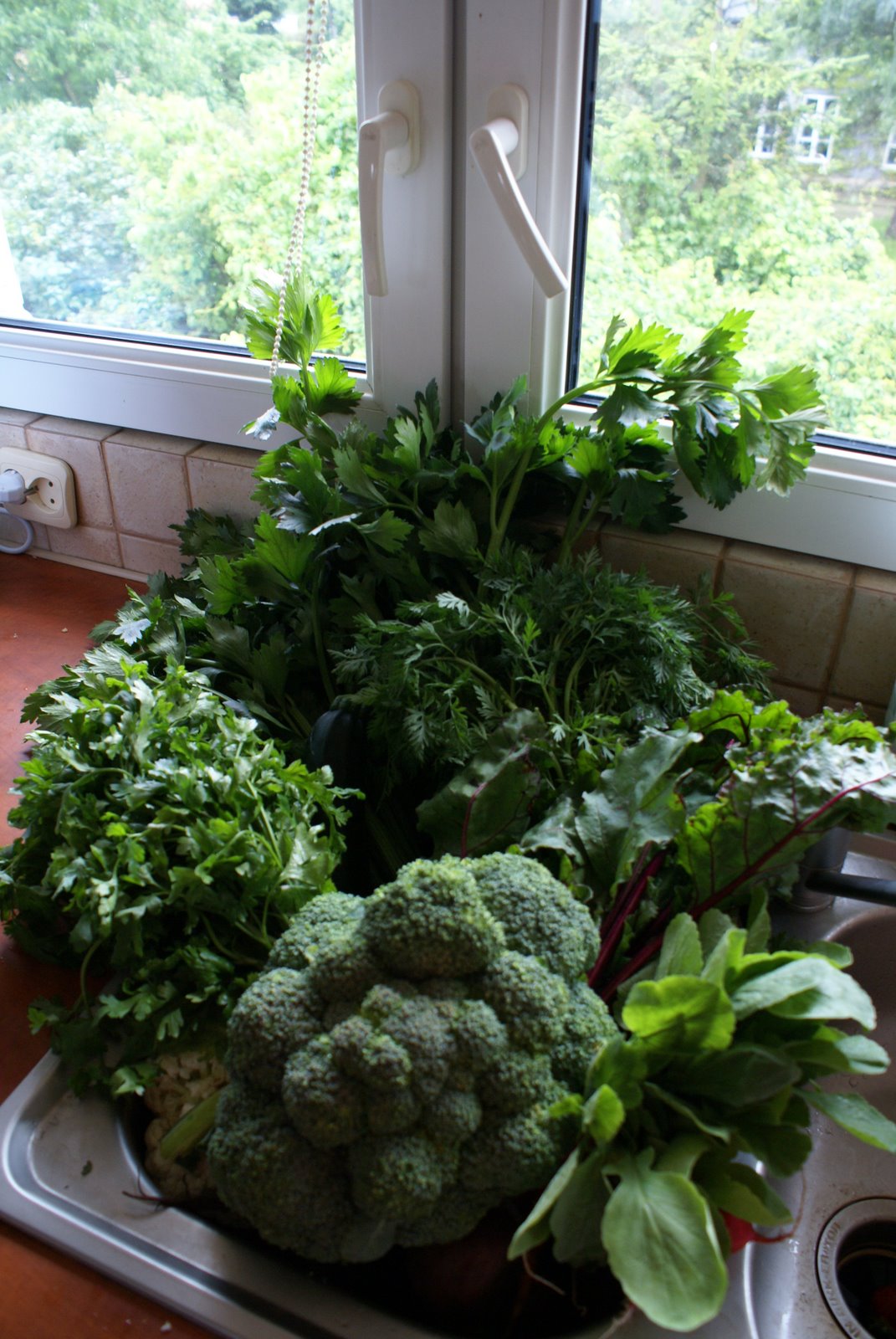Japanese fortnight (1): 2009 Shigaraki Shincha
Posted on 29 July 2009
2008 Gyokuro Kame-Jiru-Shi (O-Cha)
2008 Gyokuro Tama Homare (Marukyu)
2008 Kabusecha Takamado (Marukyu)
2008 Karigane Otowa (Marukyu)
2008 Sencha Miyabi (O-Cha)
2009 Shincha Fukamushi Supreme (O-Cha)
2009 Shincha Shuei (Marukyu)
2009 Shincha Uji Gold (Marukyu)
2009 Shincha Yutakamidori (O-Cha)
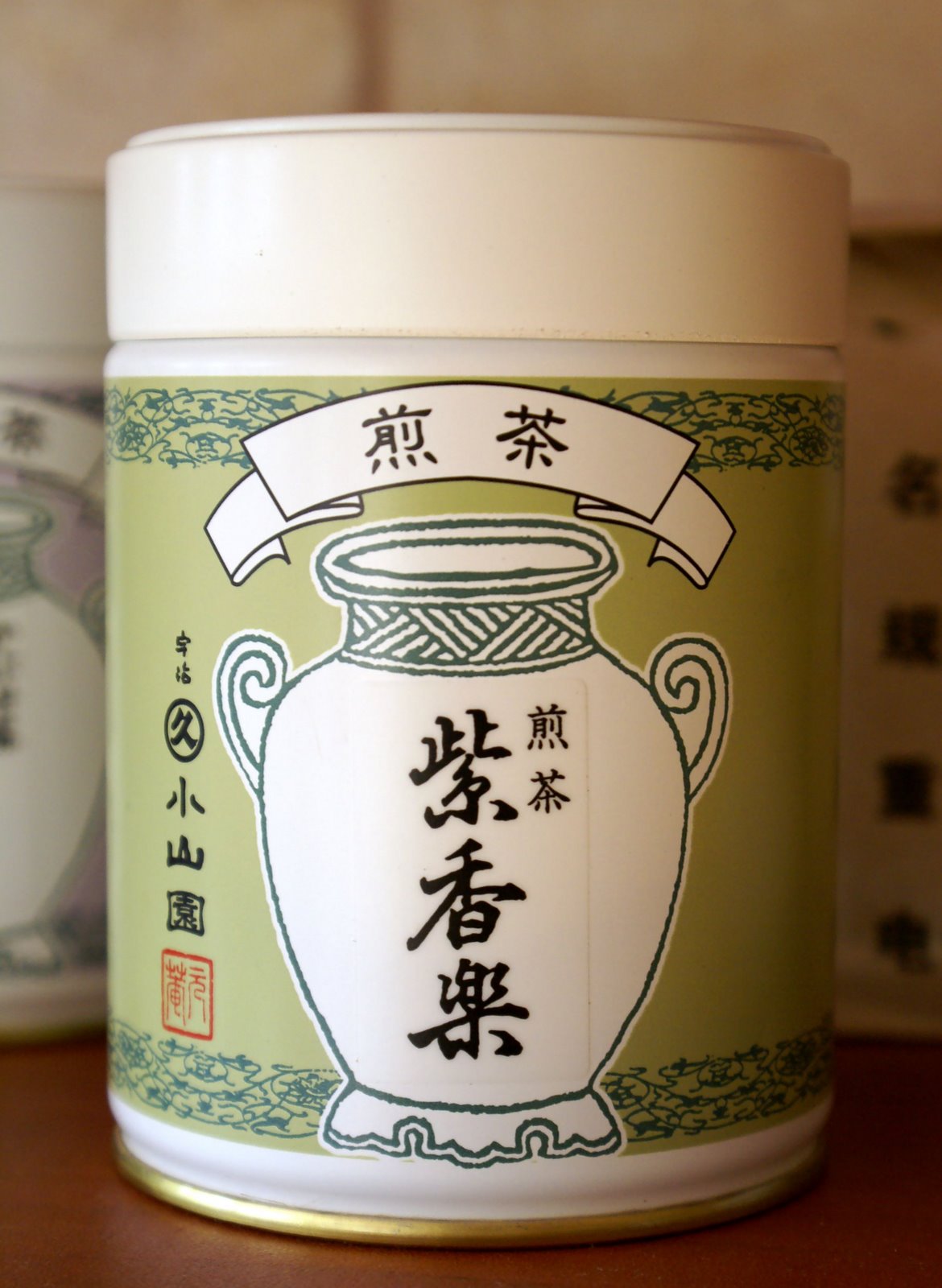 This 2009 Shigaraki Shincha is the second-cheapest from Marukyu-Koyamaen (where I’ve received excellent service, and can heartily recommend this shop). At ¥900 / 90g can (and the cans are pretty nice: see photo), it is fairly inexpensive for a quality sencha. Shigaraki is a town historically renowned for its pottery; located next to Uji, I have no confirmation whether the leaves for this tea do indeed come from Shigaraki.
This 2009 Shigaraki Shincha is the second-cheapest from Marukyu-Koyamaen (where I’ve received excellent service, and can heartily recommend this shop). At ¥900 / 90g can (and the cans are pretty nice: see photo), it is fairly inexpensive for a quality sencha. Shigaraki is a town historically renowned for its pottery; located next to Uji, I have no confirmation whether the leaves for this tea do indeed come from Shigaraki.
I have brewed this tea as all other Japanese greens in my reviews, alternating 150ml glass pot, 180ml Tokoname kyusu pot, and my favourite Korean clay pot (which you can see more extensively in
this post), dosing at 2g / 100ml and with water at 70C, 75C, 80C (I find myself stopping by the third brew almost universally with Japanese teas; the first one is almost always the most enjoyable and revealing). Where there is a deviation from this regime I will indicate this.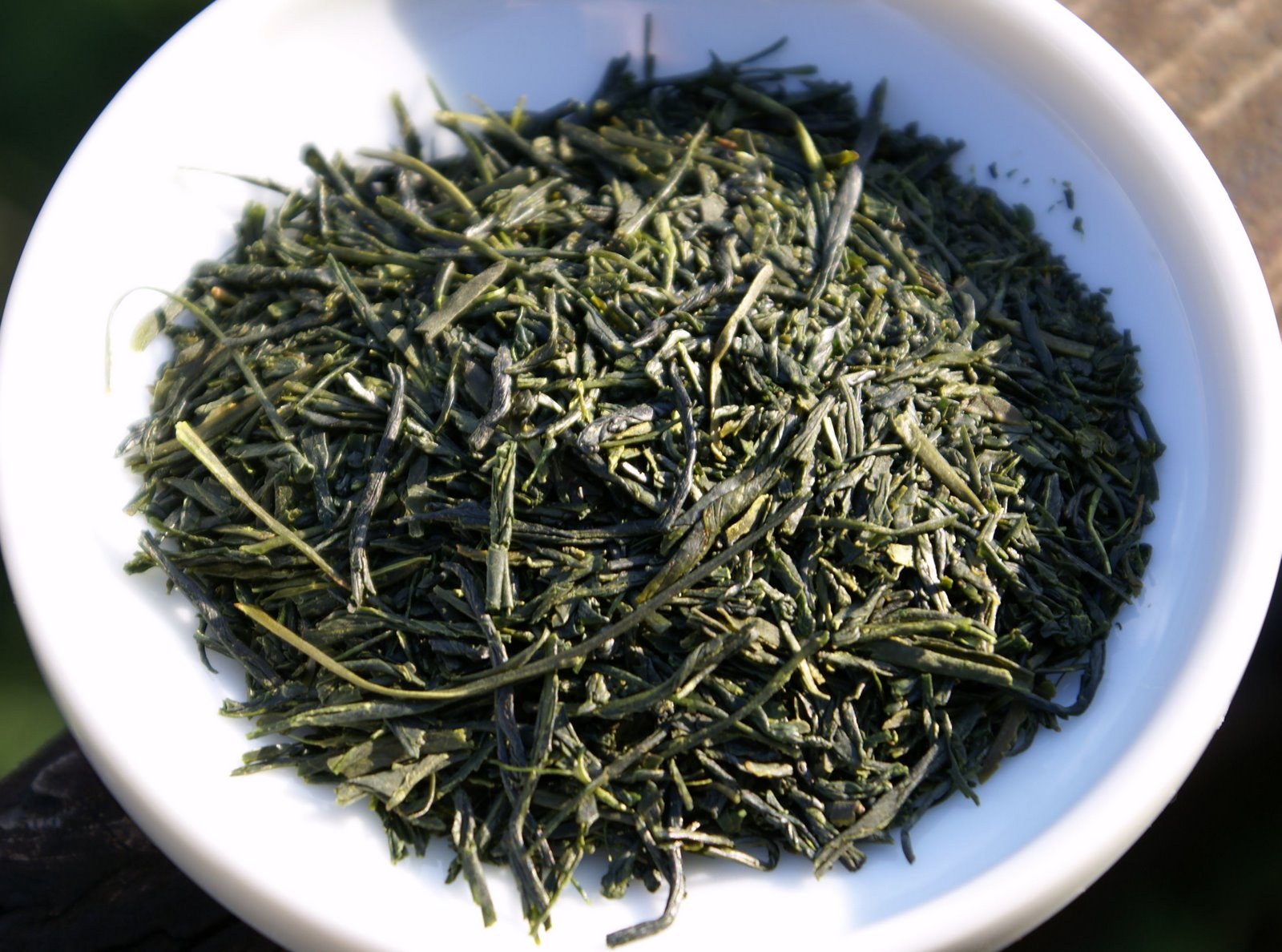
As you can see from the picture, the dry leaf is of high quality: consistent, well-processed, good-looking asamushi [light-steamed] that fills the drinker with high expectations. The leaf has little distinctive aroma to speak of, lightly vegetal with little intensity; there’s no perceptible roast.
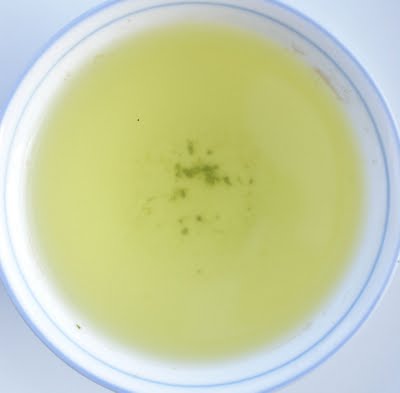 Brewing no. 1 (90 seconds at 70C).
Brewing no. 1 (90 seconds at 70C).In essence, this is a fairly light tea. It brews a light, transparent yellow-green colour, and is noticeably low in aroma. The flavour, however, is satisfying. No great intensity but a clean character, quite mild and unaggressive with no astringency whatsoever if brewed conservatively. It’s vegetal, leafy (but not grassy), less tangy than most sencha, with decent length. It’s not really thick but has a vaguely milky mildness to the texture, true to its asamushi peerage. Definitely uncomplex but I like it for its clean and classic profile. It’s also fairly forgiving: you really have to beat it hard on the head (i.e., going above 80C and dosing >3g) to develop any bitterness, and even then it’s of the clean invigorating kind.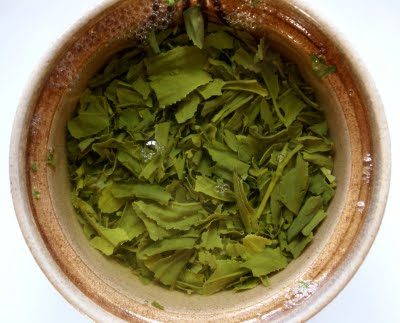 Shincha [first spring harvest of sencha] is often defined as bold and powerful, and tea vendors routinely warn you against overbrewing it. As with sencha, there’s a wide variety of styles and it all really depends on the region, tea cultivar, grade, processing technique etc. This tea is everything but ‘bold’, which is fine with me. For the price, it’s utterly good, and I highly recommend it.
Shincha [first spring harvest of sencha] is often defined as bold and powerful, and tea vendors routinely warn you against overbrewing it. As with sencha, there’s a wide variety of styles and it all really depends on the region, tea cultivar, grade, processing technique etc. This tea is everything but ‘bold’, which is fine with me. For the price, it’s utterly good, and I highly recommend it.
